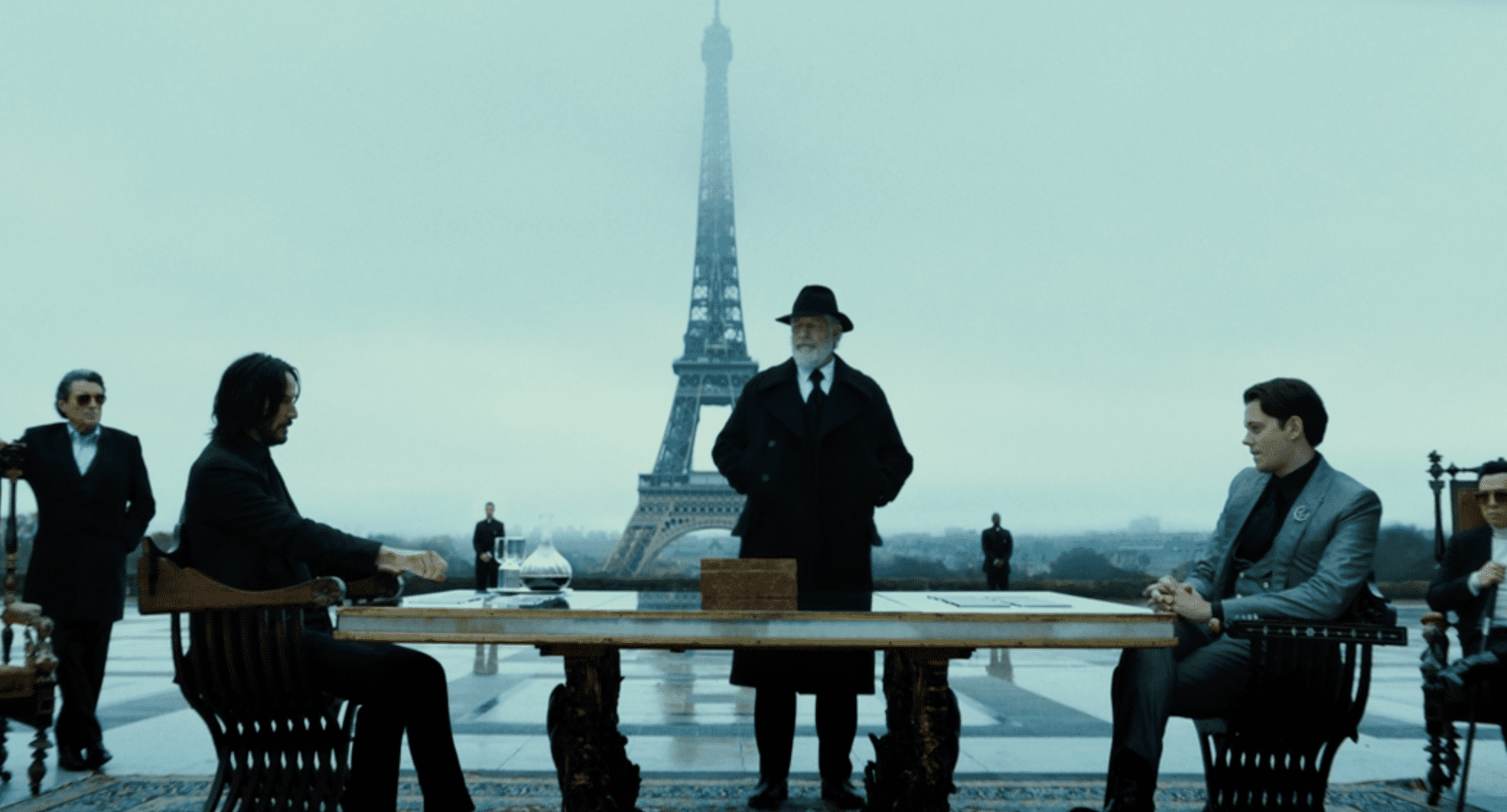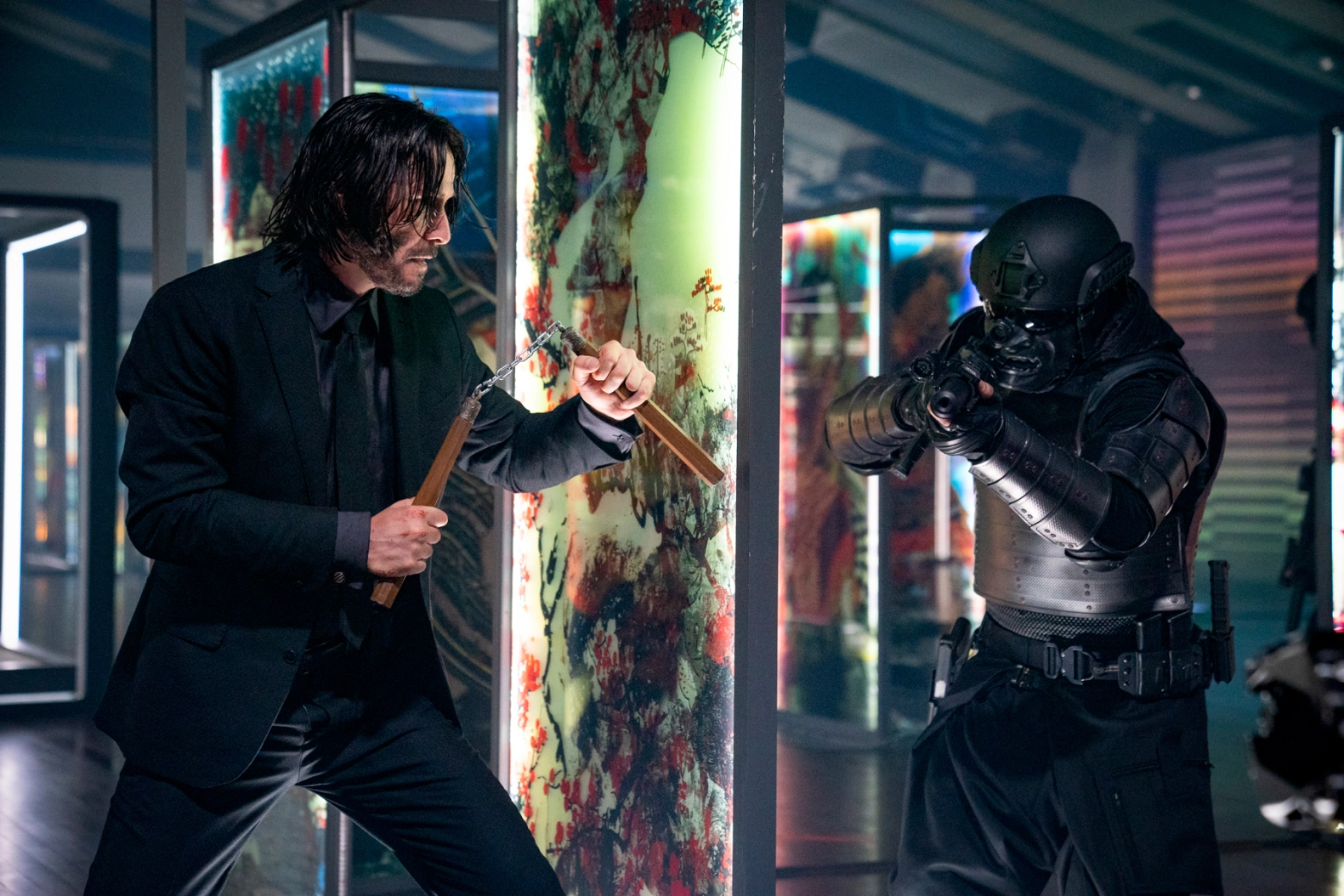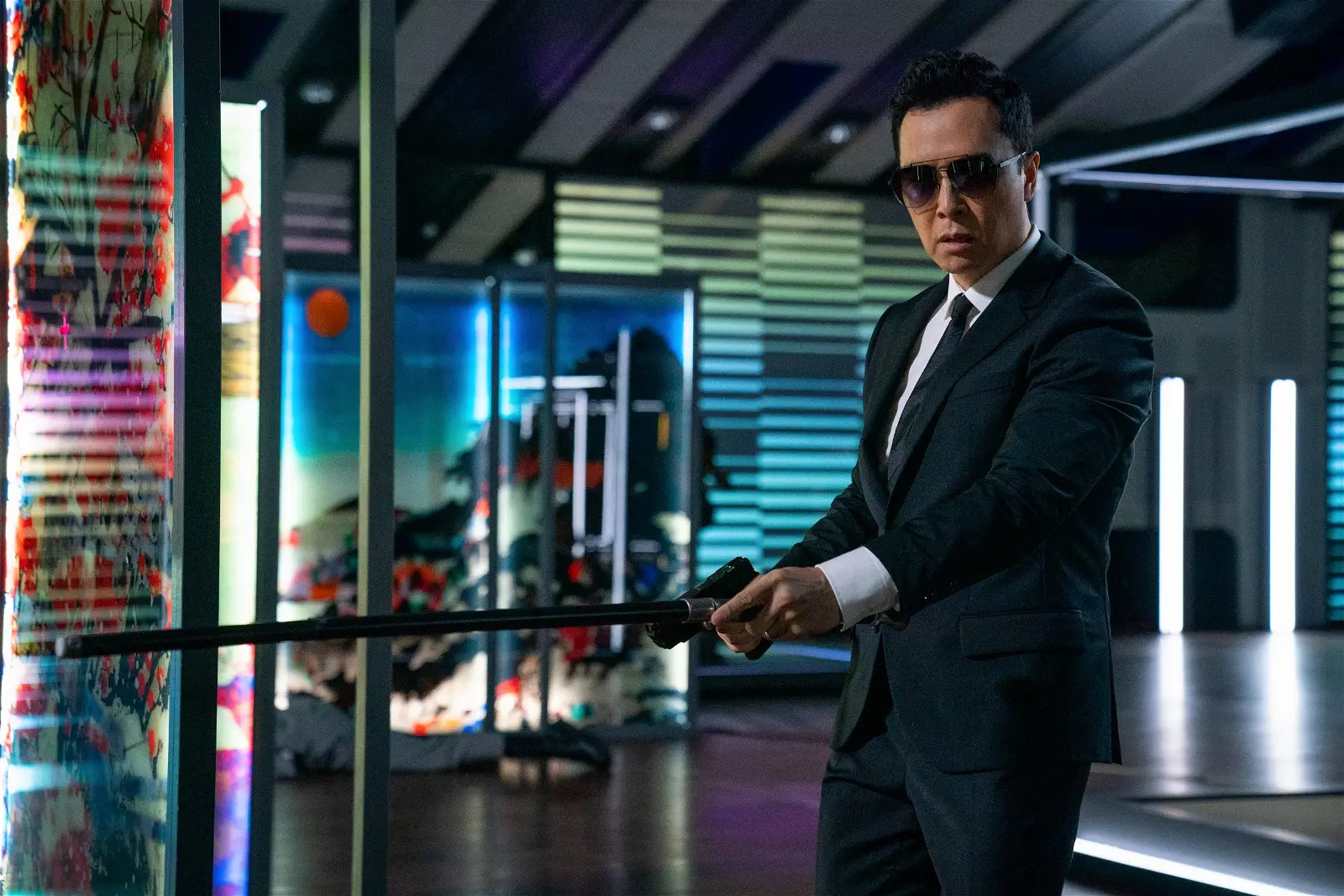I dunno; it’s pretty remarkable that the franchise’s fourth movie can make me shed a tear or two when John Wick confesses what he wants his tombstone to read. Perhaps, it is because it is a reminder that the John Wick movies, for all their action bravado, are about a man asking for time to grieve being denied that lashes out. John Wick, next to Lieutenant Columbo and Norm Gunderson, might be the ultimate wife guy.
Chad Stahelski’s John Wick: Chapter 4 is a fitting end for the unstoppable Baba Yaga, merciful merchant of death, master of gun-fu, loving husband, and grieving dog lover John Wick. It feels redundant to say, as I have said about each of the John Wick movies, but Chapter 4 is pure cinema.

Stahelski returns with cinematographer Dan Lausten, who has shot the last two John Wick movies and made another loving tribute to action, gun fights, and classical and modern film. Lausten is sometimes a collaborator of the great Guillermo del Toro, but he also shot the abysmally lit Proud Mary. In other words, Lausten has his ups and downs, but it’s safe to say, Chapter 4 is an up.
Operatic, maximalist, epic, or whatever term you choose to toss at Stahleski’s magnum opus, Chapter 4 is big. The action set pieces are immense; the set designs often dwarf the characters, and the music doesn’t blare so much as it consumes the viewer. Stahelski and Lausten have made an epic and aren’t ashamed of flexing their cinematic muscles.
Filled with homages, Chapter 4 is a movie one can watch and see the history of cinema within each composition; whether it be silent films, 80s Hong Kong Action, or more modern fare, Stahelski, and Lausten cull from the past and shape it to their ends. One example is the infamous horizon shot from Lawrence of Arabia.
It is a shot that reminds us that in addition to Lausten, Nathan Orloff’s editing is vital to Stahelski’s tense and breathtaking action. Orloff’s cuts give Chapter 4 a more robust feel. In combination with Lausten’s camera and Stahelski’s penchant for building spatial sets for his action to take place in, Orloff creates a mounting rhythm, like a river whose currents become more tumultuous the farther you travel down its course.
Keanu Reeves is, of course, back as the emotionally vulnerable mythic boogeyman of assassins, John Wick. Few action lead characters in an action franchise have carried such emotional baggage so nakedly on their faces as Reeve’s beleaguered John Wick. Yet, throughout each film, including the latest, Reeves brings a certain sense of wounded sadness to John, his face a cocktail of a man haunted by the pain of loss he has both experienced and caused.
Perhaps that’s part of what makes the John Wick movies so compelling, his vulnerability. He isn’t afraid to show anger, regret, or understanding. For as much as he’s built up through in-universe lore, John is attuned to his emotions and doesn’t pretend they do not drive him.
John isn’t a stoic, nor does he toss off one-liners after each kill. Don’t get me wrong; he’s not an everyman. Instead, each installment has seen John inch closer and closer to a video game or comic book character, able to take falls and hits and dust them off-or sleep them off. If anything, John Wick reminds us of a good nap’s almost mythical restorative powers.
Chapter 4 ups the ante, with John, and other characters, taking hits from cars, falls from great heights, stabbings, bullets, and stairs in stride. Maybe not so much the stairs.

There is one scene with John running up the stairs in visible pain, and as someone who lives on the top floor of an apartment with no elevator, I can empathize. This scene is one of, if I recall, three fight scenes involving stairways, and each of them is more painful to watch than the last.
Shay Hatten and Michael Finch’s script continues fleshing out the Kafka-esque aspects of John Wick’s world. A world so layered with written and unwritten rules that every action demands a reaction to the point of comical absurdity. It’s a wonder any business gets done in this world, as everyone is so busy paying off markers, getting retribution, and paying tribute to the High Table, all while trying to make rent.
Yet, Chapter 4 has a certain heft to it. The High Table has a new leader; John killed the last one. But as with everything he does, the final act that will grant him freedom only pulls him deeper into the labyrinthine world to which he has returned. Maybe, the leader is too strong a word, but he is the man the mysterious oligarchical uber-secretive organization that governs John Wick’s world has appointed to deal with John Wick.
The Marquis (Bill Skarsgard) wants nothing more than obedience to the High Table and to him. But it’s not a stretch to say that Hatten and Finch have made him a Trumpian figure. The Marquis holds little regard for the rules that govern the world, choosing to follow the ones that benefit him. So essentially, Chapter 4 becomes, on one level, John Wick’s journey through the seven layers of Hell but is also a hymn of resistance.
Everyone from Winston (Ian McShane) to the Bowery King (Laurence Fishburne) is shocked at the actions and steps taken by the new member of the High Table. But, there’s something different about him, a more naked hunger for power, and desire for total control, than usual. A man so avaricious that even a worldwide secret organization of assassins thinks he’s unfit should tell you something.
But what the Marquis wants more than anything is John Wick dead. Why? To show everyone that the High Table must be respected, that he must be respected. John Wick represents rebellion, a symbol that a system as complex as the High Table can be defied with something as inconceivable to them as it is to any authoritative body, friendship.
Yes, Chapter 4 is another movie rooted in Father Toretto’s enduring sermon, “It’s about family.” A theme that reverberates throughout Chapter 4 with Shimazu (Hiroyuki Sanada), the manager of the Osaka Continental, with his concierge, his only daughter Akira (Rina Sawayama), and perhaps the only man to be John Wick’s equal, the blind assassin Caine (Donnie Yen), who agrees to kill John only so the High Table will not harm his daughter. All of them understand why John is doing what he does, and they, too, know grief.

Donnie Yen, it must be said, is such a welcome sight that upon seeing him, I clapped with unvarnished excitement that had people sitting next to me looking askance. Simply put, Yen is a badass. Less an action star and more an action legend. Here he plays a blind assassin pulled back to the High Table and given a name. Because of the world’s rules, he must either accept the assignment or lose someone close to him.
As Stahelski drags us further and further into John Wick’s world, it becomes apparent how disillusioned everyone is. It seems more and more people die, and loved ones are threatened because some spoiled rich guy decrees it. Even Cain, though obliged, doesn’t seem to have his heart in it. A telling sign of the state of things from a man who willingly gave his eyes to the High Table.
Then there’s Mr. Nobody-saldy, not the one with Bob Odenkirk. Mr. Nobody (Shamier Anderson) is a tracker, a bounty hunter, waiting on the sidelines until the price is right. But even he is slowly growing wary of the High Table’s antics. At one point, Cain, awaiting a meeting with the Marquis, even warns Mr. Nobody about making a deal with him. Because in the end, the house always wins, and the people of John Wick’s world all carry the scars of this hard-learned lesson.
Amidst all this are fast cars, fast bullets, punches, kicks, and opulent settings filled with people who don’t seem all concerned with the fighting and killing going on. To some extent, I get it; who amongst us has not been captured by a house DJ’s beats so entrancing that we don’t see a literal army of men killing each other on the dance floor? But, much like The Batman, Chapter 4 is a return to movies that are aware of their ludicrousness and whose comedy stems from them embracing it instead of mocking it or pointing it out.
Even having the great and incomparable Clancy Brown as the Harbinger, an operative of the High Table who seems to exist to ensure the old ways’ rituals are carried out satisfactorily. He has a line where he says there can only be one winner, and you have to applaud Stahelski’s restraint not to have him bellow, “There can be only one!”
But it is a reminder that say what you will about modern blockbusters, so few have Clancy Brown and are that much poorer for it. Though Chapter 4 doesn’t have John Leguzizomo, so maybe it’s not perfect. But it’s damn near.
Images courtesy of Lionsgate
Have strong thoughts about this piece you need to share? Or maybe there’s something else on your mind you’re wanting to talk about with fellow Fandomentals? Head on over to our Community server to join in the conversation!

